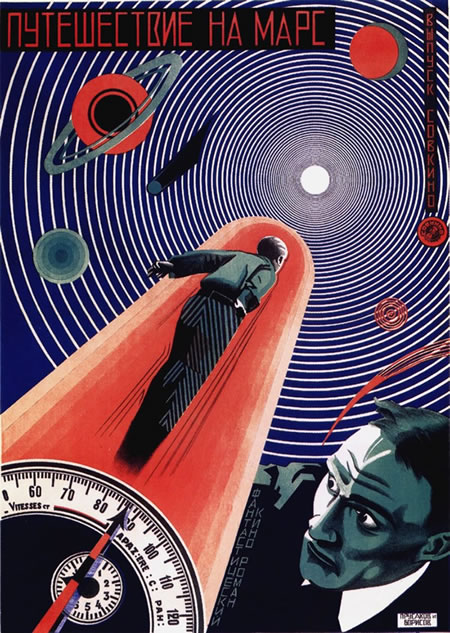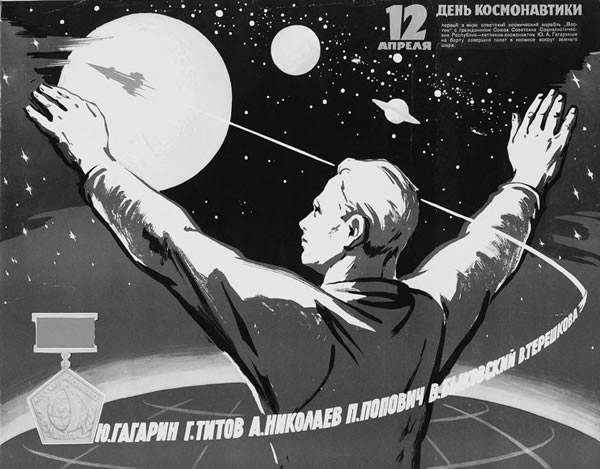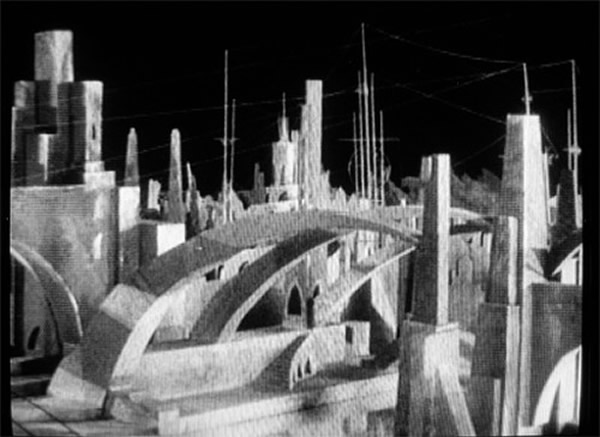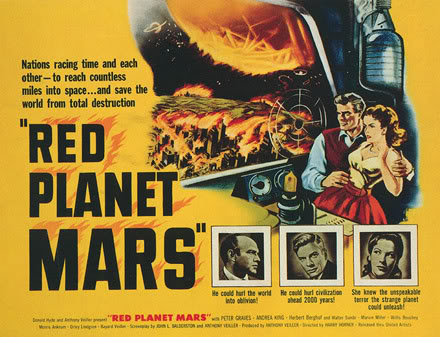
"In the bottomless night, glowing brightly out there,
Is Mars, my native red star.
But the pull of the Earth is heavy to bear
And its atmosphere weighs on my heart."
Alexander Bogdanov, A Martian Stranded on Earth
"Fifty years ago I got to see Lenin in that same hall, with his broad shoulders and high chest - talking from a small raised tribune. He moved spontaneously and effortlessly on the tribune, addressing different parts of the audience… I recall him now as the flame that burns on the Field of Mars. The revolution came and ascended the stairs."
Viktor Shklovsky, On the Dissimilarity of the Similar
"I have always said, heard, that it would not be strange that there had been civilization on Mars, but maybe capitalism arrived there, imperialism arrived and finished off the planet,"
In the same week (04/11/11) that the "astronauts" in the pretend space mission to Mars emerged from their 500 day solitary confinement, the Phobos-Grunt probe, which was supposed to go to the actual Mars, developed a fault which kept it in orbit around Earth. As metaphors go this is pretty compelling: the Soviet Union/ Russia may be drawn towards Mars, but seem ever to be bound by the gravity of Earth. Twas ever thus. Soviet visions of Mars have always been far more powerful than the sporadic attempts at exploration of the Red Planet.
But why was the Soviet Union so obsessed with Mars? Was the Red Planet the perfect symbol of the dream-myth of Communism? Or was it just the coincidence of the colour red? In this post I will explore the influence of Mars on Soviet art and culture as the canvas for a projected fantasy, a planet wide 'field of dreams'.
Mars as Utopia
Mars has always been a metaphor for an alternate Earth. Since HG Wells' War of the Worlds, the premise of alien society on Mars has been a common literary theme. In Soviet art and culture, the planet of Mars often became a world to be conquered or colonised, or most interestingly used as an example of a Communist utopia . Whereas HG Wells used the Martians as part of an anti-imperialist revenge fantasy to represent his disgust at British Empire atrocities in Tasmania, others used Mars to imagine a post-imperialist society. It was a theme that Russian writers and artists would turn to repeatedly.

The first Bolshevik Utopia in literature is widely regarded is Bogdanov's Red Star. A rather turgid novel, it was written in 1908, shortly after the 1907 coup which saw Csar Nicholas resume Imperial power, after the Russian Revolution of 1905, which is when the novel is set. In it, a Earthling revolutionary Leonid is taken to Mars to be taught their ways, where he meets one of the most important members of Martian society, Menni, and falls in love with a Martian called Netti.
Whilst perhaps not a Utopia, life on Bogdanov's Mars is fairly idyllic. It is a socialism based on abundance, not scarcity, yet the Martians do not aspire to materialism. A planned economy and advanced cybernetic control and communication systems for a population of billions allows Martian's to only work when they want, own as much material possessions as they desire, and eliminate the needs for money. Spatially, most of the surface is either inhabited or left as parkland, there is no genuine wilderness, and a complex system of irrigation is required for agricultural land. There is little detail on the degree of urbanisation of Mars, and little depiction of the rural culture. The capital city, Centropolis, houses the majority of people, and Leonid also travels to another city on the other side, but there is no mention of suburbs. Martians fly between major cities at tremendous speed.
As Daniel Gerould writes:
"Drawing upon Wells and Western SF for the myth of superior beings on Mars with advanced technology, as well as upon the then popular theory of Martian-made canals, Bogdanov in Red Star uses the already classic formula of the visitor from outside voyaging to the alien country and then returning home. During the revolution of 1905, Martian agents on Earth choose the social revolutionary Leonid as the human most fit to come with them to their planet and see the future in operation, both because Russia is the country most attuned to the times to come and because Leonid personally is endowed with "as little individualism as possible" and therefore stands a chance of adjusting to a collectivist and egalitarian society. Just as in the 1920s and '30s the Soviet leaders would bring leftist visitors from the West to show them how well communism worked, so the Martians offer their guest a model for subsequent human social organisation."
Dramatic tension in the book is introduced by way of failing resources, due to overpopulation. The Martians have to chose between waging war on the barbaric people of Earth, or braving the storms of Venus to secure the supplies of 'minus-matter' they need. While concepts of recycling and conservation are barely considered by Bogdanov, nor what happens to all the waste they must have produced to have completely exhausted Mars' natural resources, he does at least consider the issues that may face a post-revolutionary society.

Bogdanov wrote a further book set on Mars, Engineer Menni, written in 1913 as a prequel to Red Mars. Engineer Menni details the creation of the communist state on Mars and the over through of the feudal house of Aldo. It is possible to read Engineer Menni (who also is a central character of Red Star) as an allegorical tale, with the evolution of the socialist society on Mars predicting the coming revolution on Earth. Through the lens of the society on Mars, Bogdanov was able to show what post-revolutionary Russia might look like, and indeed a planet wide Soviet Union.
Before he dies, Engineer Menni has a series of apocalyptic visions--of the exhaustion of energy, of the dying Sun, of the end of life, of the engulfing void--and he must somehow overcome his nihilistic despair.
"We have exploded and cast into the sun all of our planets in turn, except the one upon which we stand at this moment. The energy released gave us an additional hundred thousand years. We have spent most of that time trying to find the means to resettle in other solar systems. Here we have failed utterly. We could not completely conquer time and space."
The third book was meant to be based on the poem he wrote called "A Martian Stranded on Earth', but Bogdanov died before it was completed. As a pioneer of blood transfusions (a theme which is also present in Red Star) he exchanged blood with a student who has both malaria and TB - he died but the student lived.
Stalin was a big fan of Engineer Menni and Red Star, and drew inspiration from these novels in his zeal to build the disastrous White Sea Canal. Stalin's interpretation of Engineer Menni is remarkable. In Loren Graham's "The ghost of the executed engineer: technology and the fall of the Soviet Union", he writes:
"Stalin was a great admirer of canal projects, and he was fascinated by the role of engineers in their construction, especially engineers whose expertise was necessary but who could not be trusted because of their political views. Two of his favourite novels before the Revolution were Aleksandr Bogdanov's Red Star and Engineer Menni. In these works of science fiction, the builders of socialism on the planet Mars have to rely on an engineer named Menni, educated before the Socialist Revolution, who is both brilliant and traitorous, Menni recommends a path for a canal that purposefully delays construction and causes the deaths of many labourers. Menni is arrested, the mistakes are rectified, and the canal is completed. Stalin believed that, if kept under surveillance, even hostile technical specialists could be forced to yield their expertise for the benefit of the state."
New forms for a new planet
In setting works on Mars, writers and filmmakers could explore new forms, and new spatial arrangements, and discover a synergy with much of the work of avant-garde artists and architects, both Suprematists and Constructivists.
Owen Hatherley, in the article Delirious Moscow, writes:
"One of the war cries of the Russian Futurists was The War of the Worlds' Martian roar 'ULL-AA', which would in 1919 provide the title for one of Viktor Shklovsky's manifestos for the alienation effect, 'Ullya, Ullya, Martians'. In order to truly estrange , to provide the distance from everyday life’s stock responses and learned indifference that, for Shklovsky, is the key element in great art (be it Tolstoy or the circus), the alienation effect is taken literally to mean the visitation by the alien nation. Shklovsky writes of an avant-garde work being 'worthy of my brothers, the Martians'. This is what much of the Russian Avant-Garde saw themselves as. Like Tatlin's Third International Tower , whose iron legs and perpetual motion are akin to the Martians' walking tripods, this was something as fearsome, uncanny and technologically terrifying as the alien invasion, and intended to be every bit as threatening to existing society."
Svetlana Boym, writing in Ruins of Modernity, also notes Shklovsky's admiration of Tatlin's tower:
"from the very beginning, the Tatlin Tower engendered its double - a discursive monument almost as prominent as the architectural original. Victor Shlovksy is one of the few contemporaries who appreciates the unconventional architecture of the Tower, which for his is an architecture of estrangement. Its temporal vectors point towards the past and the future, toward 'the iron age of Ovid' and the 'age of construction cranes, beautiful like wise Martians'."



Krutikov's Space City of the Future, designed in 1928, imagined a floating city supported by a anti-gravity coil. Meanwhile in 1919 Gustav Klucis made compositions for an ideal Dynamic City, Malevich devised his Planits, and El Lissitsky's Proun constructions became ever more otherworldly.

Constructivist visions of Mars
The other pre-eminent Russian work of fiction set on Mars is Aelita, by Alexei Tolstoy, written in 1923, six years after the second Russian Revolution of 1917 and the instigation of a Socialist state. In it the character Los travels to Mars to lead a popular uprising against the Elders. When the rebellion is crushed Los and Aelita, the princess of Mars, seizes control to establish her own totalitarian regime. Again the book can be consider as an allegorical tale, though of course Tolstoy could write from a historical perspective rather than predictive as Bogdanov had to.
It was made into a film Aelita, Queen of Mars by Iakov Protozanov in 1924. The Constructivist style of its film sets, designed by Isaac Rabinovich, and with outlandish costumes by Alexandra Exter, depicted the advanced state of Martian society, as something for the new USSR to aspire to. While it was a major influence on Flash Gordon, Metropolis, the film fell out of favour in later years, perhaps for being a little too accurate in prefiguring Soviet society under Stalin.



Also in 1924, an animated film Interplanetary Revolution, was made by N. Khodataev, Z. Komisarenko, and Y. Merkulov. In it capitalists escaping to Mars discover the revolution has spread throughout the galaxy.
Mars in American Science Fiction
In contrast to the early Russian works, early American science fiction saw Mars as little more than an exotic stageset, the backdrop for picaresque adventures such as those of John Carter, in the Edgar Rice Burroughs series of pulp novels. Beginning with A Princess of Mars in 1911, the Barsoom series of ER Burroughs was eventually made up of 11 books written up to 1943. Mars is considered little more than a desert environment, based upon the astronomical observations of Percival Lovell, and beset with warring tribes and ferocious monsters.
Red Planet = Red Menace
But it wasn't just the Soviets who would align themselves with the Red Planet. In the 1950's, American cinema was more than ready to equate Martians with Soviets and the burgeoning Red Scare. The 1953 film version of The War of the Worlds made the Martian invasion an allegory for a Communism invasion, and there were similar themes in 1952's Red Planet Mars and 1953's Invaders from Mars.

Expanding the scope further, alien invaders as a metaphor for the red menace was a common theme of many sci-fi movies of the time, Them (19954), This Island Earth (1955), and 1956's Invasion of the Bodysnatchers and Earth vs The Flying Saucers).
Operating in stark contrast to the Hollywood melodrama of Martian invasion, Pavel Klushantsev's Road to the Stars (1954) is a serious attempt by a Soviet filmmaker to show how the Soviet conquest of space would play out. A young man learns about spaceflight, before a sequence shows a lunar landing. The final sequence shows a lunar base, manned explorations of Mars, the moons of Saturn, and 'beyond the infinite'. The film was rushed to completion and released shortly after the launch of Sputnik 1 shocked the world.
A Red City for a Red Planet
The lure of the Red Planet to the Communists was surely the chance to begin afresh with a tabula rasa, where Communism did not have first to overthrow an incumbent capitalist society, and sweep away its aristocratic past. If there had to be a Socialist Revolution (as in Red Star), it was a total, world revolution.
In 1929, the sociologist Mikhail Okhitovich, part of the radical Constructivist architectural group OSA created a plan for a Red City of Planet of Communism. This disurbanist plan reimagined a city not as a series of concentric rings radiating out from a central hub, which owed its typology to the urbanism of a feudal era, but as a series of rhythms, a distribution of resources, functions and occupancies.


"The whole world is at our service, and first and foremost, transport and communications… We ask ourselves, how shall we resettle all the urban populations and economic activities? Answer: not according to the principles of crowding, but according to the principle of maximum freedom, ease and speed of communication."
Okhitovich saw further than any other contemporary urban theorist, that distributed electrical power, advanced telecommunications and high-speed transport networks created new possibilities for human habitation, and could eradicate the tension between the urban/rural that bedevilled the Soviet Socialist project. The disurbanist proposal was not anti-urban, it was a continuous urban field, city as network, city as process. Thus Okhitiovich prefigured contemporary dialogues on infrastructure ecologies, network displacements effects. As Catherine Cooke writes:
"'The City', wrote Okhitovich, 'is not some kind of sum of people living in "one" place. The city is a socially, not territorially, determined human entity … It is an economic and cultural complex'. Moreover: 'The question to be elucidated now is, must the different functions of the city exist in one physical body; will they become estranged by separation, as the parts of a biological organism would be? In other words, is the ever increasing crowding of people, buildings etc on one spot inevitable or not? Let us examine by what means people are fastened to one place; from what does this attraction to one another derive, this mighty centripetal force?'"
Okhitovich's utopianism matches that of Bogdanov completely, the potential to build a new class consciousness by rejecting the forms of the past, and build a worldwide Socialist settlement. Ultimately, Okhitovich was too much the post-Marxist visionary, unable to scale back from the grand plan, too open to be attacked for failing to directly address the immediate issues of peasant dwellings. Under Stalin, visionary design that did nothing for the common man was considered itself bourgeois, and Okhitovich's fate was sealed under the Stalinist Terror, betrayed by rival architects Mordvinov and Alabian.
Okhitovich didn't specify which planet this Red City might be built on. It was a city reaching around the world, one that could not be confined to national boundaries. Could it be that Okhitovich planned his utopian city not to be on Earth at all? Could it have been meant for Mars?
In Soviet Russia, Mars travels to you
As with so much in Soviet society, the theoretical vision was far in advance of the practical application. As Phobos-Grunt's orbit slowly decays, dooming it to crash back to Earth later this month (January 2012), its destiny is also to be a Martian stranded on Earth.
Previously
- Red Mars
- Klushantsev
- Kino fist: Road to the Stars
